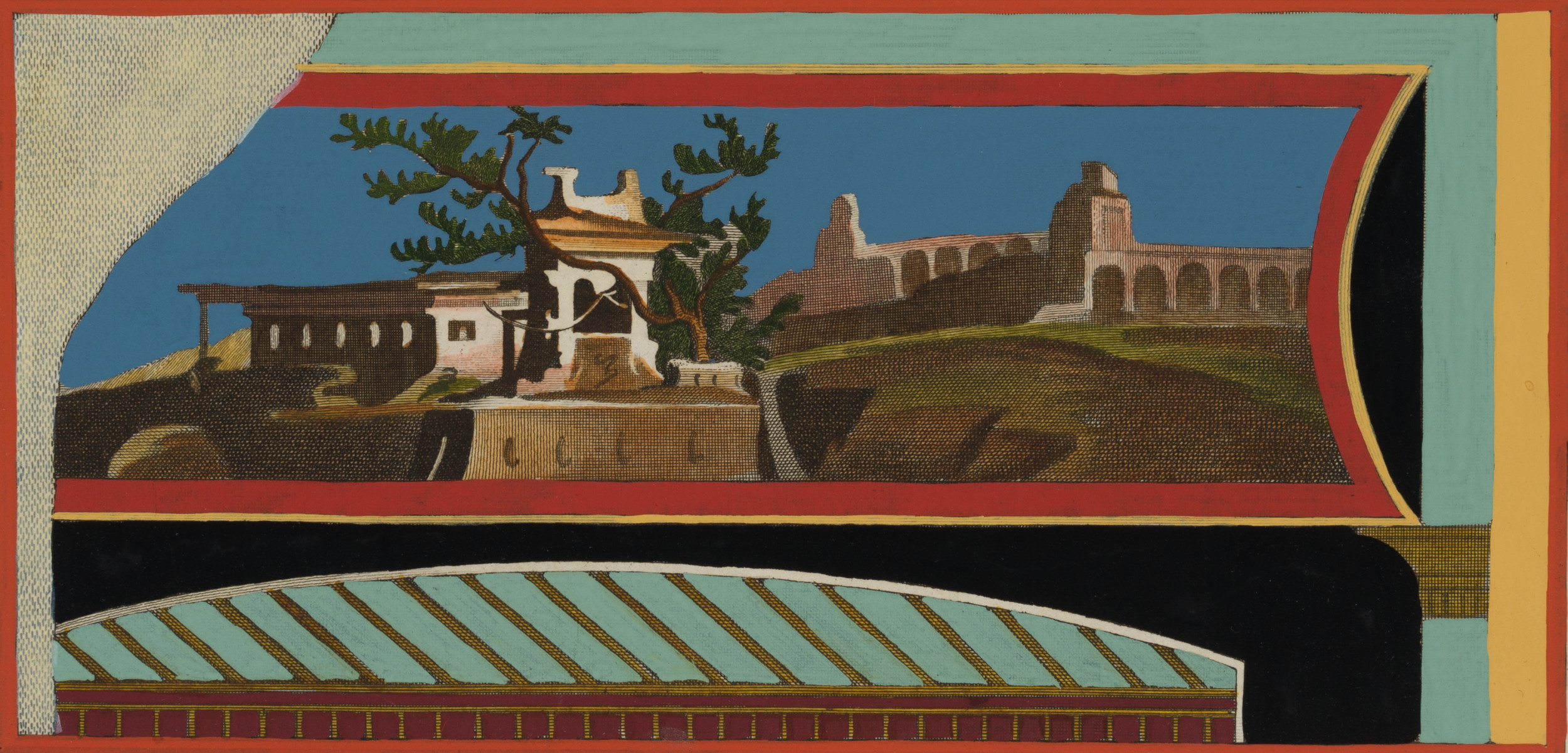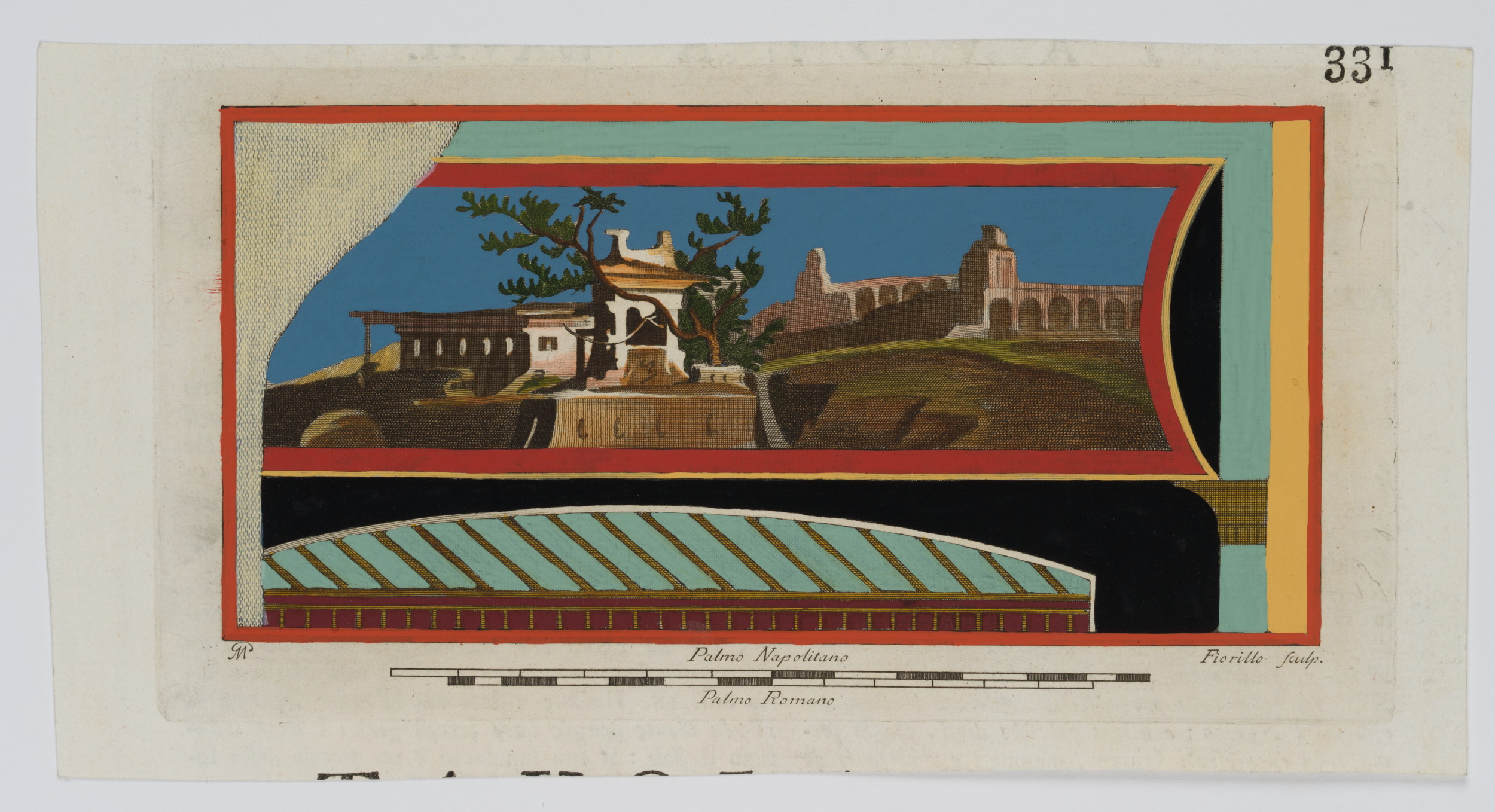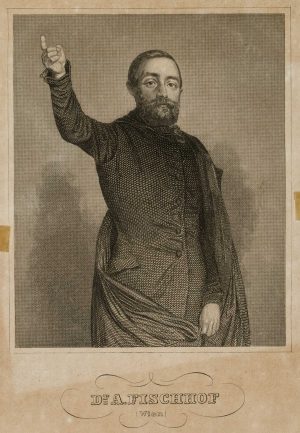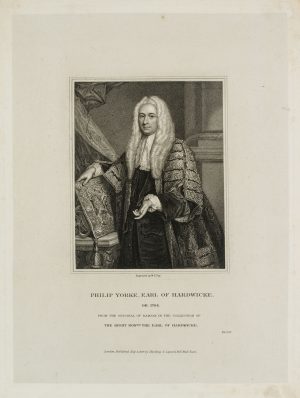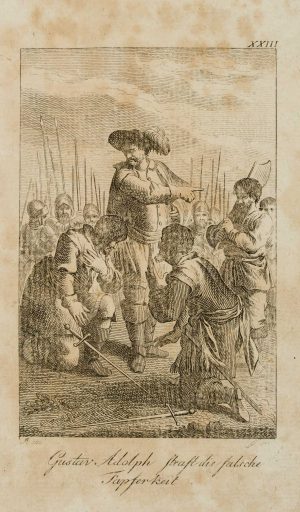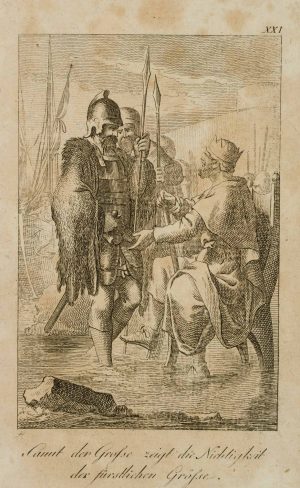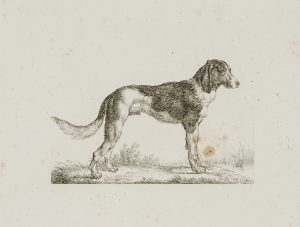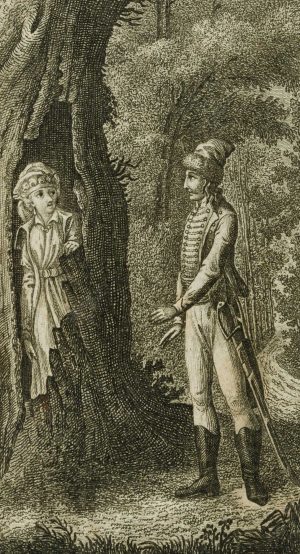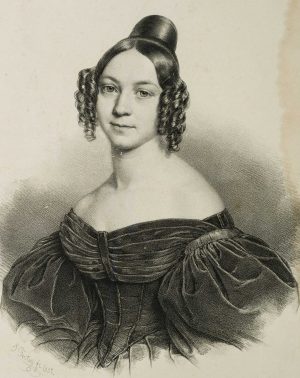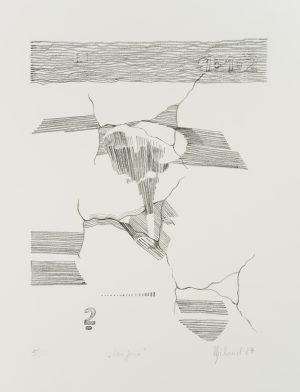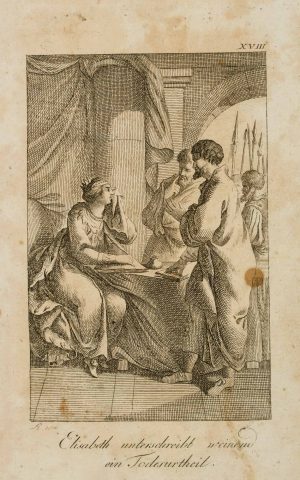Nicola Fiorillo (vor 1768 – nach 1795 ) nach C. M. (18. Jahrhundert), Landschaft mit Architektur, um 1770, Kupferstich
- Technik: Handkolorierter Kupferstich auf Papier, montiert auf Karton
- Bezeichnung: Unten mittig im Druck signiert: “CM | Fiorillo sculp.”. Unten mittig im Druck bezeichnet: “Palmo Napolitano | Palmo Romano”. Oben rechts im Druck nummeriert: “331”.
- Datierung: um 1770
- Beschreibung: Nach den Fresken aus den Grabungsstätten Herculaneum und Pompeji. Indem die Ränder des Stiches unregelmäßig und mit Fehlstellen abschließen, gibt die Darstellung den fragmentierten Zustand des Freskos wieder.
- Verso: Mit italienischem Text bedruckt
- Quelle: Karl , König, (1716 Madrid-1788 Madrid) Antichità di Ercolano, 1757-1792 | Buch, Mythologie
- Schlagworte: Pompeij, Herculaneum, Fresko, römische Wandmalerei, antike Kultur, Klassizismus, Pompejanischer Stil, Antike, Tempel, Landschaft, Architektur, Landschaft, Italien, Neapel (Kampanien), Römisch, 1750-1799
- Größe: 13,1 cm x 25,4 cm, Druckplatte: 11,8 cm x 22,0 cm, Darstellung: 9,7 cm x 19,5 cm
- Zustand: Guter Zustand. Altersbedingt leicht verfärbt und leicht fleckig. Die Ränder sind teils schief beschnitten. Der Text auf der Rückseite drückt sich stellenweise auf der Ansichtsseite durch.
English Version:
Nicola Fiorillo (before 1768 – after 1795 ) after C. M. (18th century), Landscape with architecture, c. 1770, Copper engraving
- Technique: Hand colored Copper engraving on Paper, mounted on Cardboard
- Inscription: Lower middle signed in the printing plate: “CM | Fiorillo sculp.”. Lower middle inscribed in the printing plate: “Palmo Napolitano | Palmo Romano”. Upper right numbered in the printing plate: “331”.
- Date: c. 1770
- Description: After the frescoes from the excavation sites of Herculaneum and Pompeii. By ending the edges of the engraving irregularly and with missing parts, the depiction reflects the fragmented state of the fresco.
- Verso: Printed with Italian text
- Source: Karl , König, (1716 -1788 ) Antichità di Ercolano, 1757-1792 | Book, Mythology
- Keywords: Pompeii, Herculaneum, fresco, Roman mural, ancient culture, classicism, Pompeian style, antiquity, temple, landscape, architecture, 18th century, Roman, Landscape, Italy,
- Size: 13,1 cm x 25,4 cm (5,2 x 10 in), Plate: 11,8 cm x 22,0 cm (4,6 x 8,7 in), Depiction: 9,7 cm x 19,5 cm (3,8 x 7,7 in)
- Condition: Good condition. Slightly discoloured and slightly stained due to age. The margins are partly crookedly trimmed. The text on the reverse side is partly pressed through on the view side.

